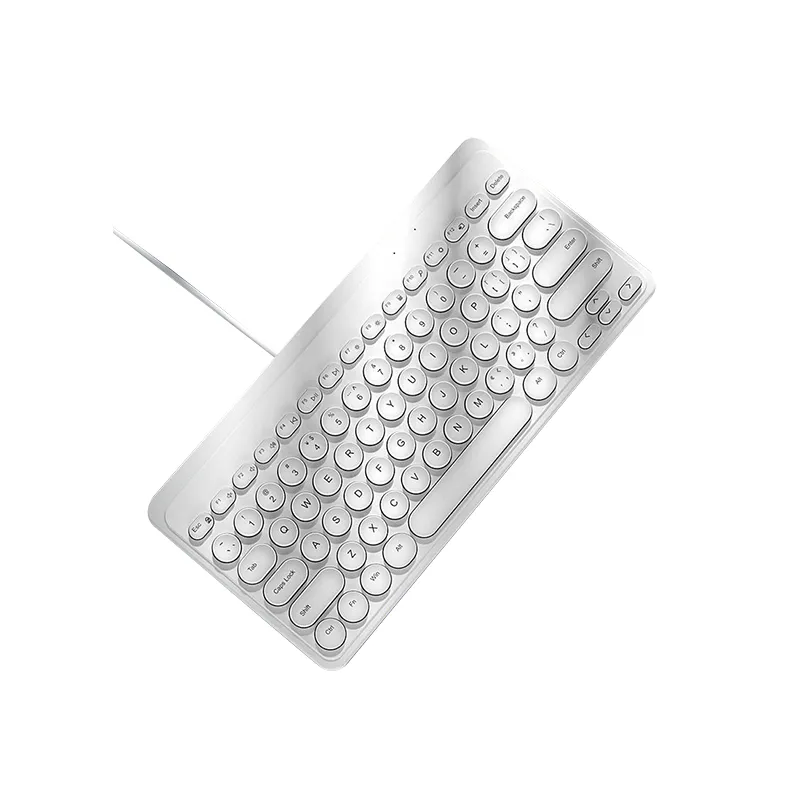Why Does the Ordinary Keyboard Remain a Timeless Tool?
2024-11-28
In an era of advanced technology and constant innovation, the ordinary keyboard might seem like a relic of the past. Yet, despite the rise of touchscreens, voice recognition, and ergonomic alternatives, the traditional keyboard remains a fundamental tool in our daily lives. But why does this seemingly simple device still hold such relevance in today’s digital landscape? Let’s delve into the reasons behind the enduring popularity of the ordinary keyboard and its place in the world of technology.
1. What Defines an Ordinary Keyboard?
An ordinary keyboard, often referred to as a standard keyboard, typically includes 104 or 105 keys laid out in the familiar QWERTY layout. It has a straightforward design, with minimal additional features beyond the essential keys needed for typing, navigating, and executing basic commands. These keyboards are widely used in homes, offices, and schools, serving as the default input device for most computers.
2. Why Is the Ordinary Keyboard Still Relevant?
The continued use of ordinary keyboards stems from their practicality, simplicity, and universal appeal. Here are a few reasons why this classic device remains indispensable:
- Familiarity and Ease of Use: The QWERTY layout has been around for over a century, making it second nature to billions of users worldwide. Its widespread adoption ensures that anyone, regardless of their age or technical proficiency, can easily interact with an ordinary keyboard.
- Efficiency for Typing: While alternative input methods like touchscreens and voice commands have their merits, none rival the speed and accuracy that skilled typists can achieve with a traditional keyboard. This makes it the preferred choice for writing, coding, data entry, and other text-heavy tasks.
- Versatility Across Devices: Ordinary keyboards are compatible with virtually every computer, laptop, and even some tablets. Their plug-and-play functionality ensures seamless integration, whether through USB connections or wireless technologies like Bluetooth.
- Durability and Affordability: Compared to more complex or ergonomic options, ordinary keyboards are affordable and built to last. They’re often the first choice for individuals and businesses seeking cost-effective, reliable input devices.
3. How Does the Ordinary Keyboard Adapt to Modern Needs?
Even as newer technologies emerge, ordinary keyboards have evolved to meet contemporary demands. Manufacturers have improved materials, responsiveness, and designs to enhance user experience without deviating from the classic format. Some of these innovations include:
- Improved Key Switches: Modern keyboards often feature enhanced switches, such as membrane or mechanical variants, offering smoother typing experiences and longer lifespans.
- Integration with Smart Devices: Many ordinary keyboards now include multimedia keys or shortcuts for controlling playback, adjusting volume, or accessing apps, making them more functional for multitasking.
- Compact and Wireless Versions: For users on the go, smaller and wireless versions of ordinary keyboards provide the same functionality while improving portability.
4. What Challenges Do Ordinary Keyboards Face?
While the ordinary keyboard has stood the test of time, it isn’t without its limitations:
- Ergonomic Concerns: Long hours of typing on a standard keyboard can lead to discomfort or repetitive strain injuries. As a result, ergonomic alternatives are gaining traction among users seeking healthier options.
- Competition from Touch and Voice Input: Touchscreens and voice recognition technologies offer intuitive and hands-free input methods, particularly on mobile devices. These innovations have reduced reliance on traditional keyboards in certain contexts.
- Aesthetic and Functional Upgrades: Many users are drawn to advanced keyboards featuring customizable backlighting, programmable keys, or split layouts, which enhance both form and function.
5. Why Does It Still Matter?
Despite these challenges, the ordinary keyboard continues to thrive because it strikes the perfect balance between simplicity and efficiency. It remains the backbone of productivity for professionals, students, and casual users alike. Its widespread availability and familiarity ensure that it remains a trusted tool for millions around the world.
6. Conclusion
The ordinary keyboard may not be flashy or high-tech, but its enduring relevance lies in its practicality and timeless design. It’s a device that transcends trends, providing users with a reliable, familiar, and efficient means of interacting with technology. As we embrace new input methods and futuristic devices, the ordinary keyboard will likely continue to hold its ground, reminding us that sometimes, the simplest tools are the most effective.



